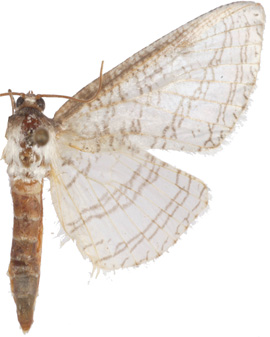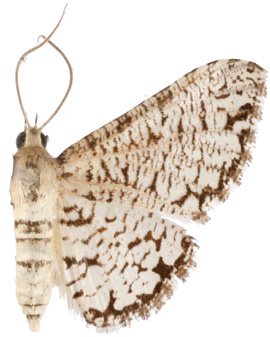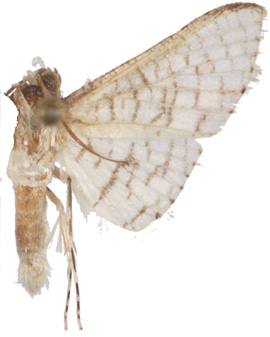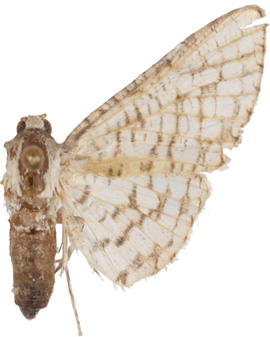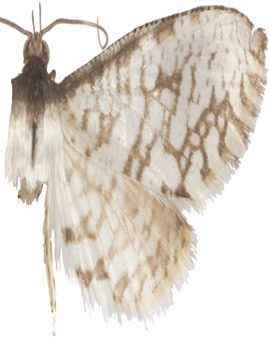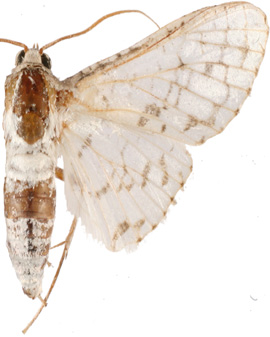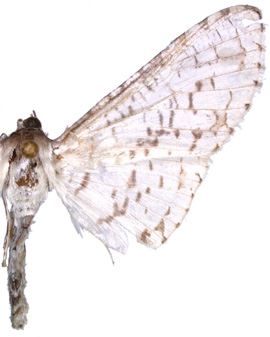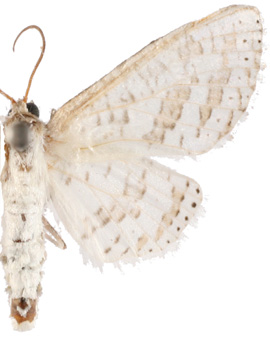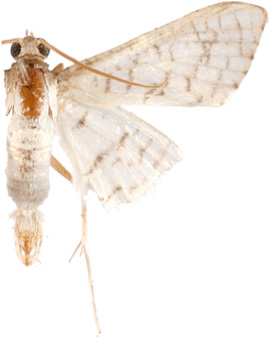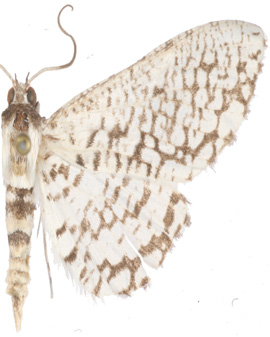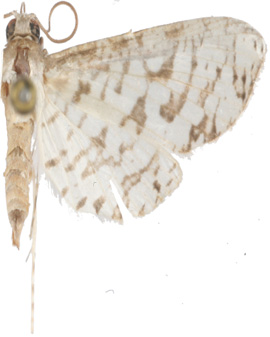Scientific classification
Animalia > Arthropoda > Insecta > Lepidoptera > Ditrysia > Thyridoidea > Thyrididae > Striglininae > Rhodoneurini > Epaena
Genus Epaena Karsch, 1900
Type species: E. elephantinalis (Karsch, 1900: 245) by monotypy, is in ZMB (NMHU) Berlin; [nec tridesmodes, auct., Warren (1899: 290)].
Syn. trijuncta (Warren, 1898: 5) (Dixoa). Syn. n. Whalley (1964, 1971a: 107).
Epaena was established in the Pyralidae The type species was placed in the Thyrididae by Gaede, (1929: 497)
Generic description: Labial palps three segmented. Eyes without interfacetal hairs. Proboscis present. Antennae are ciliate, minutely ciliate or bipectinate. Fore tibiae with epiphysis. Hind tibiae with two pairs of spurs and tarsi without spines. FW usually with some fusion of radial veins R3+R4, R3+R4+R5 or R2+R3+R5, rarely with veins from cell. Gnathos usually present. Female without signum (Whalley 1971a: 106-107).
Epaena are small to medium sized silvery white moths with delicate narrow grey or brown patterns and speckles on the wings. The genus consists of about 30 species which occur from Afrotropical areas across southern Asia to China and S to New Guinea. Many are unnamed. Black and white Epaena spp. have no metallic scales on Un near the FW costa, although this area can be very shiny. However some spp. of Epaena & Calindoea can appear very similar.

